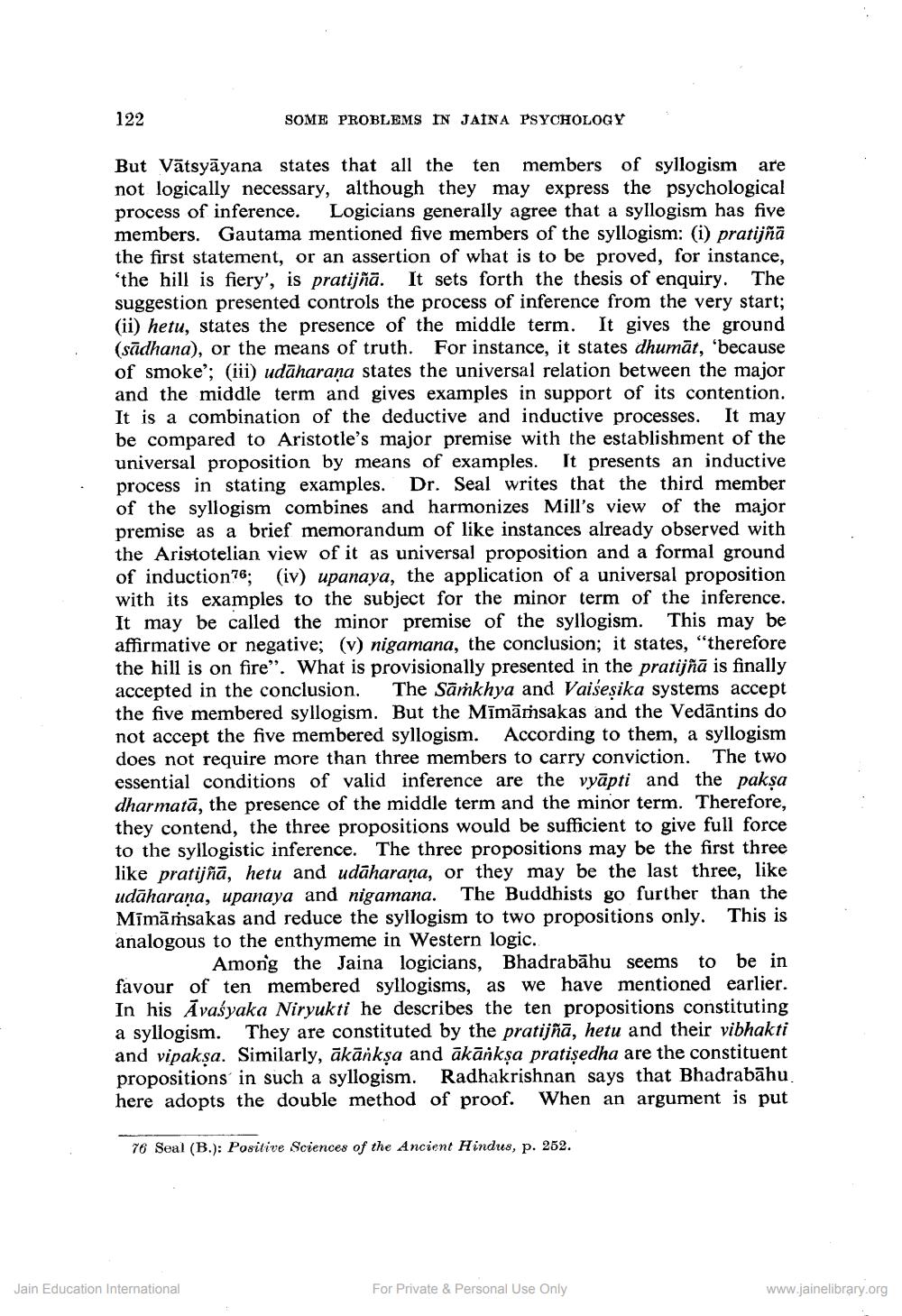________________
122
SOME PROBLEMS IN JAINA PSYCHOLOGY
But Vätsyāyana states that all the ten members of syllogism are not logically necessary, although they may express the psychological process of inference. Logicians generally agree that a syllogism has five members. Gautama mentioned five members of the syllogism: (i) pratijñā the first statement, or an assertion of what is to be proved, for instance, 'the hill is fiery', is pratijñā. It sets forth the thesis of enquiry. The suggestion presented controls the process of inference from the very start; (ii) hetu, states the presence of the middle term. It gives the ground (sadhana), or the means of truth. For instance, it states dhumat, 'because of smoke'; (iii) udāharaṇa states the universal relation between the major and the middle term and gives examples in support of its contention. It is a combination of the deductive and inductive processes. It may be compared to Aristotle's major premise with the establishment of the universal proposition by means of examples. It presents an inductive process in stating examples. Dr. Seal writes that the third member of the syllogism combines and harmonizes Mill's view of the major premise as a brief memorandum of like instances already observed with the Aristotelian view of it as universal proposition and a formal ground of induction76; (iv) upanaya, the application of a universal proposition with its examples to the subject for the minor term of the inference. It may be called the minor premise of the syllogism. This may be affirmative or negative; (v) nigamana, the conclusion; it states, "therefore the hill is on fire". What is provisionally presented in the pratijñā is finally accepted in the conclusion. The Samkhya and Vaiseṣika systems accept the five membered syllogism. But the Mīmāmsakas and the Vedantins do not accept the five membered syllogism. According to them, a syllogism does not require more than three members to carry conviction. The two essential conditions of valid inference are the vyapti and the pakṣa dharmata, the presence of the middle term and the minor term. Therefore, they contend, the three propositions would be sufficient to give full force to the syllogistic inference. The three propositions may be the first three like pratijñā, hetu and udaharaṇa, or they may be the last three, like udaharaṇa, upanaya and nigamana. The Buddhists go further than the Mimämsakas and reduce the syllogism to two propositions only. This is analogous to the enthymeme in Western logic..
Among the Jaina logicians, Bhadrabahu seems to be in favour of ten membered syllogisms, as we have mentioned earlier. In his Avaśyaka Niryukti he describes the ten propositions constituting a syllogism. They are constituted by the pratijñā, hetu and their vibhakti and vipakṣa. Similarly, akankṣa and ākānkṣa pratiședha are the constituent propositions in such a syllogism. Radhakrishnan says that Bhadrabahu. here adopts the double method of proof. When an argument is put
76 Seal (B.): Positive Sciences of the Ancient Hindus, p. 252.
Jain Education International
For Private & Personal Use Only
www.jainelibrary.org




